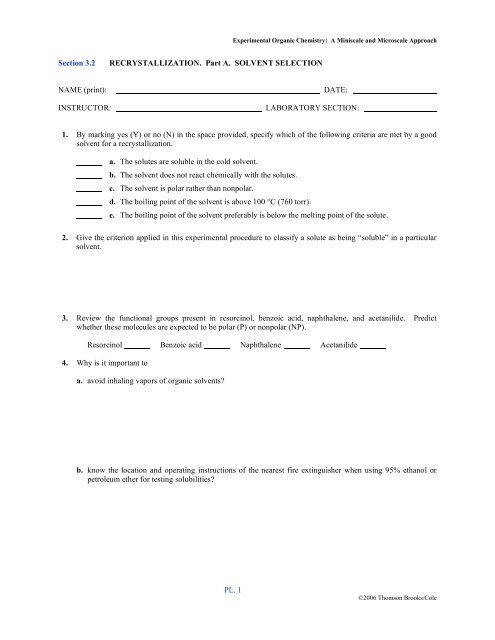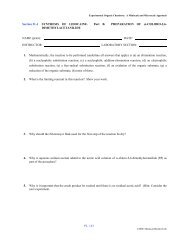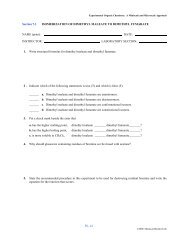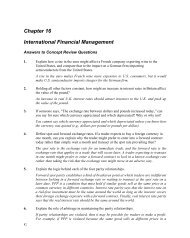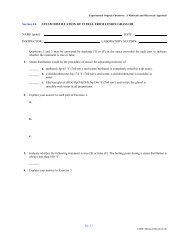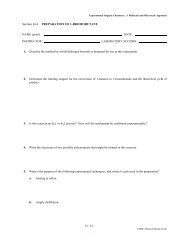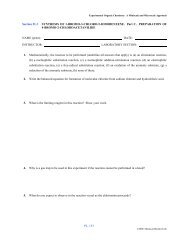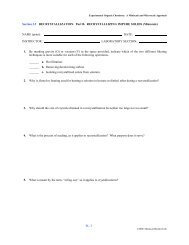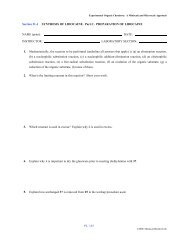RECRYSTALLIZATION. Part A. SOLVENT SELECTION
RECRYSTALLIZATION. Part A. SOLVENT SELECTION
RECRYSTALLIZATION. Part A. SOLVENT SELECTION
You also want an ePaper? Increase the reach of your titles
YUMPU automatically turns print PDFs into web optimized ePapers that Google loves.
Experimental Organic Chemistry: A Miniscale and Microscale Approach<br />
Section 3.2<br />
<strong>RECRYSTALLIZATION</strong>. <strong>Part</strong> A. <strong>SOLVENT</strong> <strong>SELECTION</strong><br />
NAME (print):<br />
INSTRUCTOR:<br />
DATE:<br />
LABORATORY SECTION:<br />
1. By marking yes (Y) or no (N) in the space provided, specify which of the following criteria are met by a good<br />
solvent for a recrystallization.<br />
a. The solutes are soluble in the cold solvent.<br />
b. The solvent does not react chemically with the solutes.<br />
c. The solvent is polar rather than nonpolar.<br />
d. The boiling point of the solvent is above 100 °C (760 torr).<br />
e. The boiling point of the solvent preferably is below the melting point of the solute.<br />
2. Give the criterion applied in this experimental procedure to classify a solute as being “soluble” in a particular<br />
solvent.<br />
3. Review the functional groups present in resorcinol, benzoic acid, naphthalene, and acetanilide. Predict<br />
whether these molecules are expected to be polar (P) or nonpolar (NP).<br />
Resorcinol Benzoic acid Naphthalene Acetanilide<br />
4. Why is it important to<br />
a. avoid inhaling vapors of organic solvents?<br />
b. know the location and operating instructions of the nearest fire extinguisher when using 95% ethanol or<br />
petroleum ether for testing solubilities?<br />
PL. 1<br />
©2006 Thomson Brooks/Cole
Experimental Organic Chemistry: A Miniscale and Microscale Approach<br />
5. The flash points of 95% ethanol and petroleum ether (bp 60–80 o C) are, respectively, and<br />
.<br />
6. List the effect each of the following has if it gets on your skin.<br />
a. Benzoic acid<br />
b. Resorcinol<br />
c. Acetanilide<br />
7. What action should you take if resorcinol gets in your eyes?<br />
PL. 2<br />
©2006 Thomson Brooks/Cole


